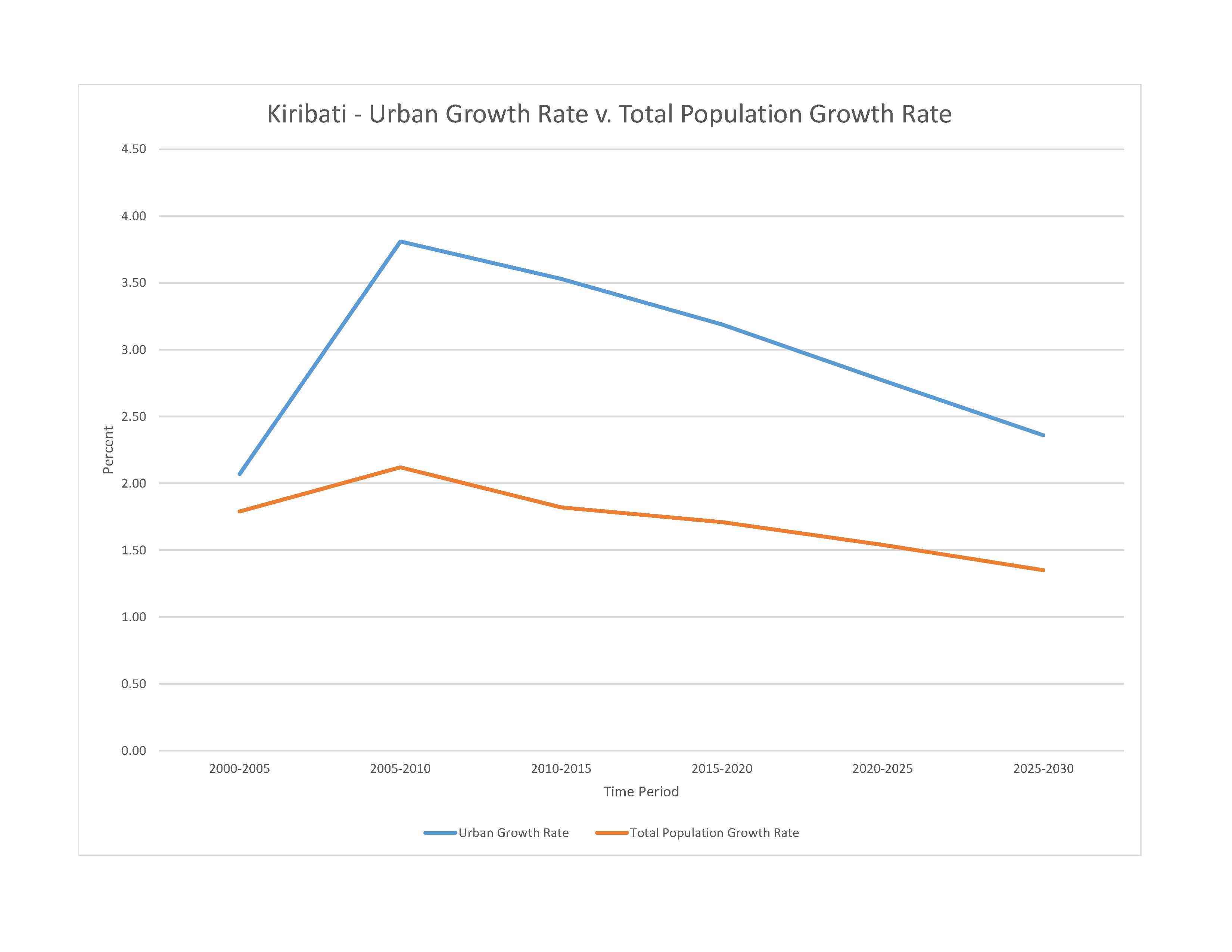
115,372 (2023 est.)
noun: I-Kiribati (singular and plural)
adjective: Kiribati
I-Kiribati 95.78%, I-Kiribati/mixed 3.8%, Tuvaluan 0.2%, other 1.7% (2020 est.)
Gilbertese, English (official)
Roman Catholic 58.9%, Kiribati Uniting Church 21.2%, Kiribati Protestant Church 8.4%, Church of Jesus Christ 5.6%, Seventh Day Adventist 2.1%, Baha'i 2.1%, other 1.7% (2020 est.)
0-14 years: 27.06% (male 15,906/female 15,314)
15-64 years: 67.77% (male 37,634/female 40,559)
65 years and over: 5.17% (2023 est.) (male 2,314/female 3,645)
total dependency ratio: 66.4
youth dependency ratio: 60.2
elderly dependency ratio: 6.2
potential support ratio: 16.1 (2021 est.)
total: 26.9 years (2023 est.)
male: 26 years
female: 27.8 years
1.02% (2023 est.)
19.9 births/1,000 population (2023 est.)
6.9 deaths/1,000 population (2023 est.)
-2.8 migrant(s)/1,000 population (2023 est.)
consists of three achipelagos spread out over an area roughly the size of India; the eastern Line Islands and central Phoenix Islands are sparsely populated, but the western Gilbert Islands are some of the most densely settled places on earth, with the main island of South Tarawa boasting a population density similar to Tokyo or Hong Kong
urban population: 57.8% of total population (2023)
rate of urbanization: 2.77% annual rate of change (2020-25 est.)

64,000 TARAWA (capital) (2018)
at birth: 1.05 male(s)/female
0-14 years: 1.04 male(s)/female
15-64 years: 0.93 male(s)/female
65 years and over: 0.63 male(s)/female
total population: 0.94 male(s)/female (2023 est.)
23.1 years (2009 est.)
note: data represents median age at first birth among women 25-29
76 deaths/100,000 live births (2020 est.)
total: 32.2 deaths/1,000 live births (2023 est.)
male: 34.2 deaths/1,000 live births
female: 30.1 deaths/1,000 live births
total population: 68.2 years (2023 est.)
male: 65.6 years
female: 71 years
2.18 children born/woman (2023 est.)
1.06 (2023 est.)
33.5% (2018/19)
improved: urban: 97.2% of population
rural: 63.1% of population
total: 82% of population
unimproved: urban: 2.8% of population
rural: 36.9% of population
total: 18% of population (2020 est.)
11.6% of GDP (2020)
0.2 physicians/1,000 population (2013)
1.9 beds/1,000 population (2016)
improved: urban: 75.4% of population
rural: 45.4% of population
total: 62.1% of population
unimproved: urban: 24.6% of population
rural: 54.6% of population
total: 37.9% of population (2020 est.)
46% (2016)
total: 0.43 liters of pure alcohol (2019 est.)
beer: 0.26 liters of pure alcohol (2019 est.)
wine: 0 liters of pure alcohol (2019 est.)
spirits: 0.17 liters of pure alcohol (2019 est.)
other alcohols: 0 liters of pure alcohol (2019 est.)
total: 40.6% (2020 est.)
male: 53.9% (2020 est.)
female: 27.3% (2020 est.)
6.9% (2018/19)
67.6% (2023 est.)
women married by age 15: 2.4%
women married by age 18: 18.4%
men married by age 18: 8.6% (2019 est.)
12.4% of GDP (2019 est.)
total population: NA
male: NA
female: NA
NOTE: The information regarding Kiribati on this page is re-published from the 2024 World Fact Book of the United States Central Intelligence Agency and other sources. No claims are made regarding the accuracy of Kiribati 2024 information contained here. All suggestions for corrections of any errors about Kiribati 2024 should be addressed to the CIA or the source cited on each page.
This page was last modified 04 May 24, Copyright © 2024 ITA all rights reserved.